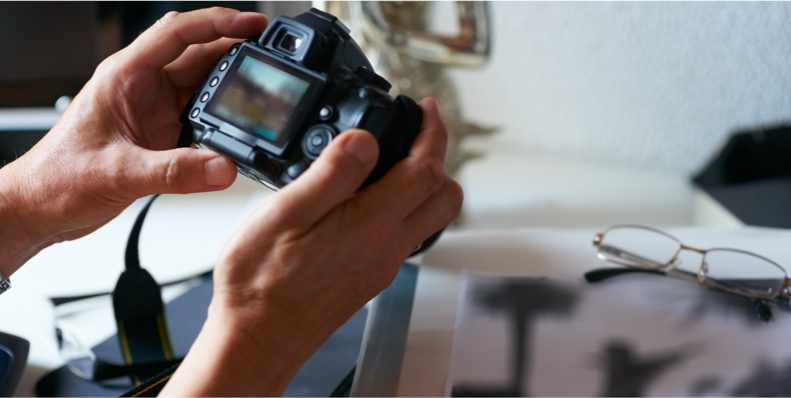



이러한 사진 편집의 기본 원칙을 염두에 두는 것은 사진을 자신 있게 편집하는 데 도움이 됩니다. 적절하게 자르는 방법을 배우거나 사진을 수정하는 방법과 시기의 중요성을 이해하시는 경우, 이 규칙을 따르시면 여러분의 작품은 더욱 선명하고 상세하게 보이며 품질을 유지할 수 있습니다.

작업 중인 이미지의 복사본을 만드는 것은 중요합니다. 첫 번째는 백업용이고 두 번째는 편집 내용이 마음에 들지 않거나 완전히 다른 접근 방식을 시도하려 할 때, 다시 작업할 수 있게 하기 위한 것입니다. 마찬가지로 사진 편집 소프트웨어를 사용해서 편집하실 때 레이어를 사용하여 기본 이미지를 건드리지 않는 것은 중요합니다. 이렇게 하면 색상 조정, 특정 영역 수정 및 대비 작업을 시작하기 전에 원본이 어떻게 생겼는지 항상 빠르고 쉽게 참조할 수 있습니다.
자르기는 소프트웨어에서 할 수 있는 가장 기본적인 사진 편집 도구 중 하나이지만 가장 강력한 도구이기도 합니다. 적절하게 사용하는 방법을 배우면 이야기를 전달하는 데 도움이 되지 않는 이미지 부분을 제거하고 도움이 되는 부분을 강조할 수 있습니다. 즉, 인물이나 야생 동물 사진에서 큰 배경을 떨어뜨리거나 특정 크기와 종횡비를 사용하여 사진이 촘촘하게 편집된 것처럼 보이게 하는 것을 의미할 수 있습니다. 가로 600픽셀의 이미지에서는 6:5 비율이 적합합니다. 정사각형 자르기는 뛰어난 대안이 될 것입니다.

사소하게 들릴 수 있지만 이미지의 크기를 조정하거나 크기를 조정할 때 동일한 치수를 유지하는 것은 중요합니다. 즉, 원근을 유지하고 이미지가 휘거나 늘어나는 것을 방지하려면 너비와 높이 치수는 동일하게 유지되어야 합니다. 이미지를 100% 이상 확대하면 이미지가 픽셀화되지만, 리샘플링으로 품질의 손상 없이 이미지 크기를 조정하실 수 있습니다. 이 과정은 이미지의 픽셀 수를 변경합니다. 사진 편집 소프트웨어 내에서 해상도를 변경하여 최종 이미지의 품질을 변경하실 수도 있습니다. 예를 들어 웹 이미지는 인쇄 품질보다 해상도가 낮은 경향이 있습니다.

피부와 이미지의 다른 부분을 수정하는 방법을 배우는 것은 사진 편집에서 가장 재미있는 부분 중 하나입니다. 기본적인 사진 편집 스폿 복구 및 복제 도구사용을 숙달하면 사진을 빠르게 정리하고 훨씬 더 깔끔하게 보이게 할 수 있습니다. 그러나 이러한 기능의 과한 사용은 자제해야 합니다. 인물 사진의 과도한 수정 기술은 피사체를 빠르게 비현실적으로 보이게 만들 수 있으며, 너무 많은 복제는 풍경을 다른 세상처럼 보이게 만들 수 있습니다. 특히 자연스러운 모습을 유지하려는 경우에 그렇습니다. 이는 색상과 채도에도 적용됩니다. 이러한 작업을 과하게 적용하시면 이미지가 지나치게 편집된 것처럼 보일 수 있으므로 다시 원본에서부터 작업을 시작해야 합니다.
모든 Wacom 펜 타블렛은 필압과 감도를 제공하므로, 획 너비, 불투명도 및 강도를 더욱 잘 제어하실 수 있습니다.
이미지의 대비가 완벽한지 확인하는 것은 모든 사진 편집 프로그램의 최우선 과제입니다. 그러나 기본 사진 편집 도구를 사용하여 사진을 고치면 어두운 부분은 너무 어둡게 보이고 밝은 부분은 흐릿하게 보일 수 있습니다. 대신 사진 편집 소프트웨어에서 레벨과 커브를 사용하는 방법을 배우십시오. 이를 통해 이미지의 대비를 훨씬 더 잘 제어하실 수 있으므로, 특정 영역을 수정하고 원하는 대로 그림자와 중간 톤을 지정할 수 있습니다. 이러한 기능을 사용하면, 사진이 화면에서 빠르게 '두드러져' 보일 것입니다.

편집을 위해 모니터 보정하는 방법을 배우는 것은, 사진 조작 기술을 한 단계 끌어올리는 데 필수적인 부분입니다. 이는 컴퓨터를 통해 수행하거나, 디스플레이에 표시되는 색상이 완벽한지 확인하는 화면을 테스트하는 전용 하드웨어로 수행하실 수 있습니다. 즉, 사진을 인쇄할 때 문제가 발생하지 않으며, 페이지의 색상이 일치하지 않는 것만 발견하실 수 있습니다.
Wacom Intuos Pro는 더 나은 사진 편집을 위한 완벽한 동반자입니다. 초고감도 Wacom Pro Pen 2이 함께 제공되는 이 세련된 태블릿은, 당신의 사진 가장 미세한 부분까지 수정할 수 있습니다. 고급 소재로 제작되었고 전문적인 기준에 따른 엄격한 테스트를 거쳤기 때문에, Wacom Intuos Pro는 당신의 사진 편집의 우수성을 위한 확실한 발걸음이 될 것입니다.
추천 제품

Wacom Intuos Pro
응답성이 높은 타블렛과 펜을 사용하여 이미지를 스케치하고 그리고 편집한 후 화면에서 작품을 확인할 수 있습니다.
Wacom의 비전은 자연스러운 인터페이스 기술을 통해 사람과 기술을 더욱 가깝게 만드는 것입니다. 이를 통해 Wacom은 펜 타블렛과 액정 타블렛 뿐만 아니라 전자 펜 스타일러스와 디지털 서명을 저장 및 처리하는 디지털 서명 솔루션 분야에서 세계 최고의 제조업체로 성장했습니다. Wacom의 직관적인 입력 장치의 첨단 기술은 전 세계에서 가장 흥미로운 디지털 아트, 영화, 특수 효과, 패션 및 디자인을 창조하는 데 사용되어 왔으며 비즈니스 및 개인 사용자에게 그들의 개성을 표현할 수 있는 선도적인 인터페이스 기술을 제공합니다. 1983년에 설립된 Wacom은 일본(도쿄 증권거래소 6727)에 본사를 둔 글로벌 기업으로 전 세계에 자회사 및 계열사를 두고 150개국 이상에서 마케팅 및 유통을 지원합니다.